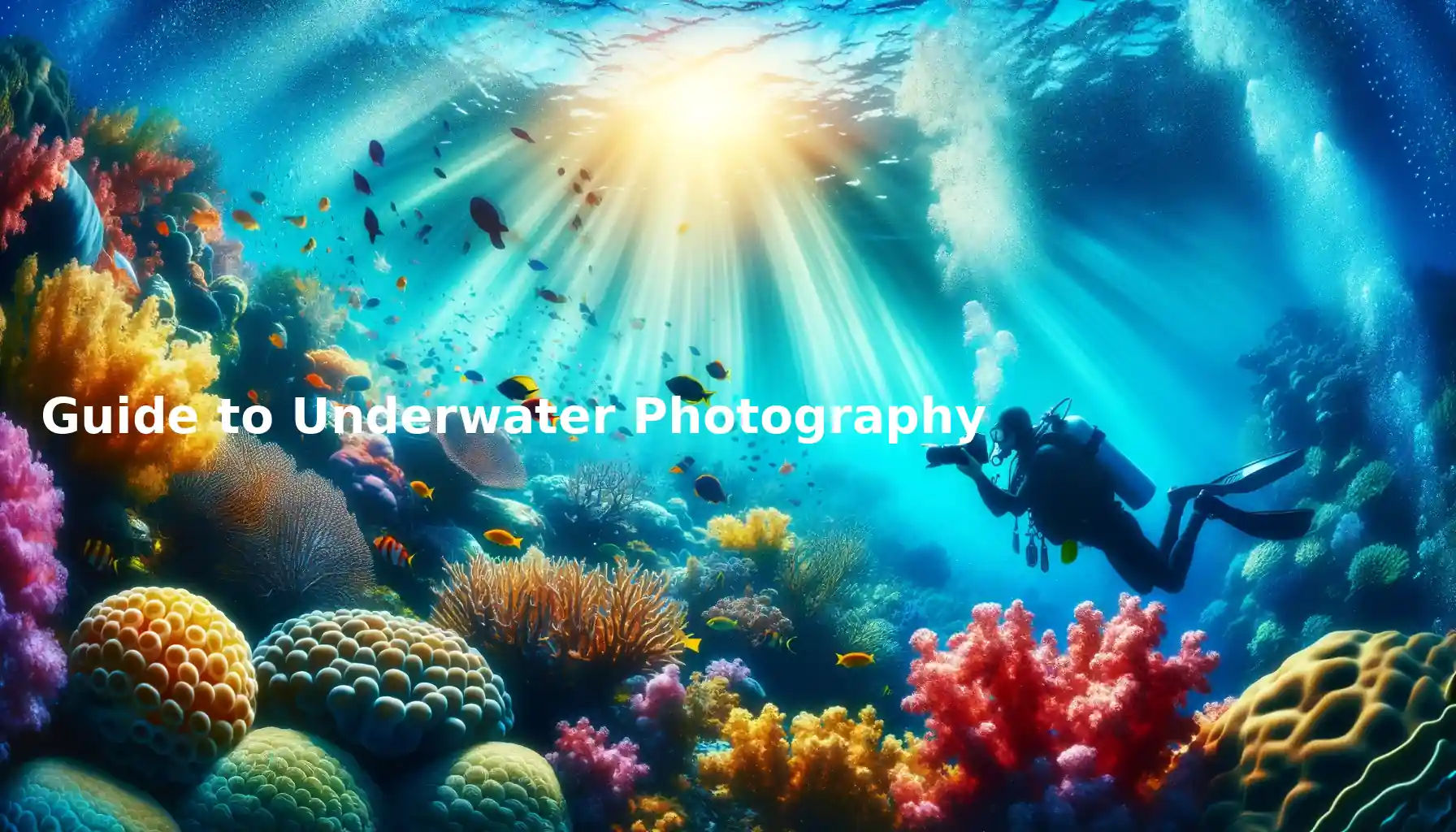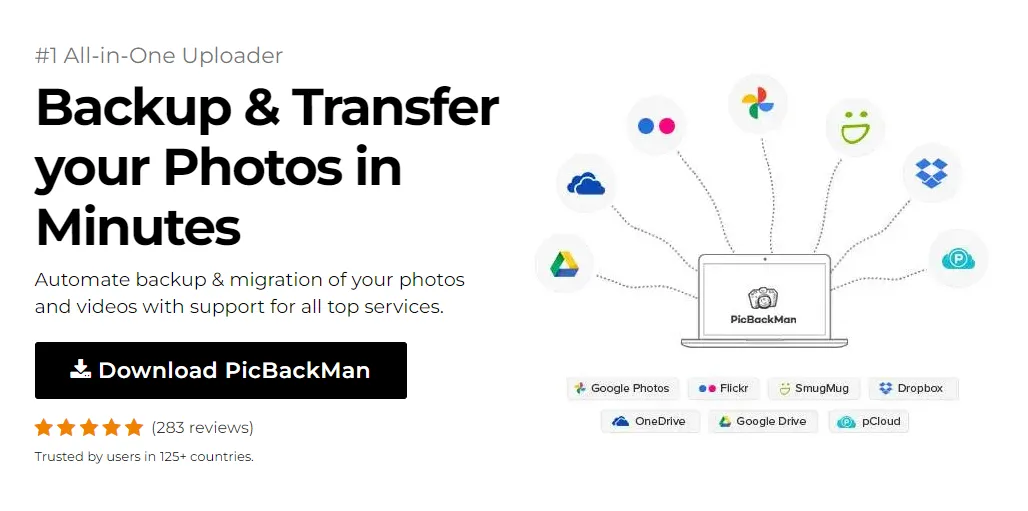
Why is it the #1 bulk uploader?
- Insanely fast!
- Maintains folder structure.
- 100% automated upload.
- Supports RAW files.
- Privacy default.
How can you get started?
Download PicBackMan and start free, then upgrade to annual or lifetime plan as per your needs. Join 100,000+ users who trust PicBackMan for keeping their precious memories safe in multiple online accounts.
“Your pictures are scattered. PicBackMan helps you bring order to your digital memories.”
Guide to Underwater Photography


Underwater photography is a captivating and challenging art form that allows photographers to explore and document the hidden beauty beneath the water's surface. This guide to underwater photography is designed to help both beginners and seasoned photographers enhance their skills and capture breathtaking underwater images. From understanding the unique challenges of shooting underwater to mastering lighting and composition, this guide covers everything you need to know to create stunning aquatic photographs.
Understanding Underwater Photography
Underwater photography differs significantly from land-based photography due to the unique properties of water. Water absorbs light and distorts colors, making it essential to adjust your techniques and equipment accordingly. The clarity of water, the behavior of marine life, and the challenges of buoyancy all contribute to the complexity of underwater photography. Understanding these factors is crucial for capturing sharp, vibrant, and well-composed images.
Equipment for Underwater Photography
The right equipment is vital for successful underwater photography. Here’s a breakdown of the essential gear you’ll need:
- Camera: DSLRs and mirrorless cameras are popular choices for their versatility and image quality. Compact cameras with underwater capabilities are also an option for beginners.
- Housing: Waterproof housing is essential to protect your camera from water damage. Ensure it’s rated for the depths you plan to dive.
- Lenses: Wide-angle lenses are ideal for capturing expansive underwater scenes, while macro lenses are perfect for close-up shots of small marine life.
- Strobes and Lighting: Underwater strobes or continuous lights are necessary to compensate for the loss of natural light and to bring out the true colors of your subjects.
- Accessories: Other useful accessories include a reliable dive computer, underwater tripod, and buoyancy control devices.
Preparing for an Underwater Shoot
Preparation is key to a successful underwater photography session. Here are some essential steps to follow:
- Research: Learn about the dive site, including the types of marine life you can expect to encounter and the water conditions.
- Safety First: Ensure you have the necessary diving certifications and that your equipment is in good working order.
- Practice Buoyancy: Good buoyancy control is crucial for steady shots and avoiding damage to the marine environment.
- Plan Your Shots: Have a clear idea of the shots you want to capture and plan your dive accordingly.
Mastering Lighting in Underwater Photography
Lighting is one of the most challenging aspects of underwater photography. Water absorbs and scatters light, resulting in images that are often dark and lack color. Here’s how to overcome these challenges:
- Use Artificial Light: Underwater strobes or continuous lights are essential for illuminating your subjects and bringing out their natural colors.
- Get Close: The closer you are to your subject, the less water there is between your camera and the subject, reducing the effects of light absorption.
- Angle of Light: Position your lights at an angle to reduce backscatter, which occurs when light reflects off particles in the water.
- White Balance: Adjust your camera’s white balance settings to compensate for color loss and ensure accurate color reproduction.
Composition Techniques for Underwater Photography
Composition is crucial for creating visually appealing underwater images. Here are some tips to improve your composition:
- Rule of Thirds: Apply the rule of thirds by dividing your frame into a 3x3 grid and placing your subject along the grid lines or intersections.
- Leading Lines: Use natural elements like coral reefs or the ocean floor to guide the viewer’s eye through the image.
- Negative Space: Incorporate negative space to create a sense of scale and emphasize your subject.
- Perspective: Experiment with different angles and perspectives to add depth and interest to your photos.
Capturing Marine Life
Photographing marine life presents its own set of challenges. Here’s how to get the best shots:
- Patience and Respect: Marine life can be unpredictable. Exercise patience and respect for the creatures you’re photographing.
- Behavior Observation: Spend time observing the behavior of marine life to anticipate their movements and capture the perfect moment.
- Stealth Approach: Approach your subjects slowly and quietly to avoid startling them.
- Focus on Eyes: The eyes of marine animals are often the most expressive part. Ensure they are in sharp focus to create a connection with the viewer.
Post-Processing Underwater Photos
Post-processing is an essential part of underwater photography. Here’s how to enhance your images:
- Color Correction: Use photo editing software to correct colors and restore the natural hues lost underwater.
- Contrast and Clarity: Adjust the contrast and clarity to make your images pop and bring out details.
- Noise Reduction: Underwater images often have more noise due to higher ISO settings. Use noise reduction tools to clean up your photos.
- Sharpening: Apply sharpening selectively to enhance the details in your images without creating artifacts.
Tips for Improving Underwater Photography Skills
Continuous improvement is key to mastering underwater photography. Here are some tips to help you grow as a photographer:
- Practice Regularly: The more you shoot, the better you’ll become. Take every opportunity to dive and practice your skills.
- Learn from Others: Join underwater photography communities, attend workshops, and learn from experienced photographers.
- Experiment: Don’t be afraid to try new techniques and push the boundaries of your creativity.
- Review and Reflect: Regularly review your photos and reflect on what worked and what didn’t. Learn from your mistakes and successes.
Quick Tip to ensure your videos never go missing
Videos are precious memories and all of us never want to ever lose them to hard disk crashes or missing drives. PicBackMan is the easiest and simplest way to keep your videos safely backed up in one or more online accounts. Simply Download PicBackMan (it's free!), register your account, connect to your online store and tell PicBackMan where your videos are - PicBackMan does the rest, automatically. It bulk uploads all videos and keeps looking for new ones and uploads those too. You don't have to ever touch it.
FAQs
What type of camera is best for underwater photography?
For underwater photography, DSLRs and mirrorless cameras are ideal due to their versatility and image quality. Compact cameras with underwater capabilities are also suitable for beginners.
How important is lighting in underwater photography?
Lighting is crucial in underwater photography as water absorbs and scatters light. Using underwater strobes or continuous lights helps to illuminate subjects and bring out their natural colors.
What are some common challenges in underwater photography?
Common challenges include light absorption, color distortion, buoyancy control, and the unpredictable behavior of marine life. Overcoming these requires proper equipment, techniques, and practice.
How can I improve my underwater photography composition?
To improve composition, use the rule of thirds, leading lines, negative space, and different perspectives. These techniques help create visually appealing and dynamic images.
What post-processing techniques are useful for underwater photos?
Useful post-processing techniques include color correction, contrast and clarity adjustments, noise reduction, and selective sharpening. These enhance the quality and appeal of underwater images.
How can I practice underwater photography if I don’t live near the ocean?
If you don’t live near the ocean, you can practice underwater photography in swimming pools or aquariums. These environments provide opportunities to hone your skills and experiment with techniques.
Guide to Underwater Photography: Conclusion
Underwater photography is a rewarding and challenging hobby that allows you to explore and document the beauty of the underwater world. By understanding the unique challenges of underwater shooting, investing in the right equipment, mastering lighting and composition, and continually honing your skills, you can capture stunning images that showcase the wonders beneath the waves. Whether you’re a beginner or an experienced photographer, this guide to underwater photography will help you take your underwater images to the next level.






